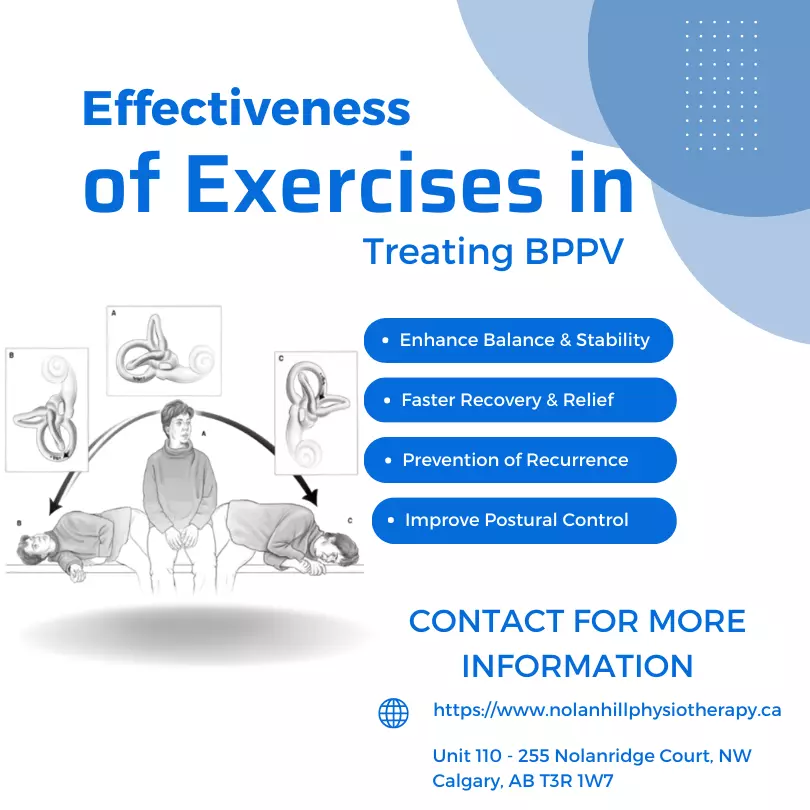Effectiveness of Home Exercises in Treating BPPV
Benign Paroxysmal Positional Vertigo (BPPV) is a common condition that causes episodes of dizziness. It can lead to feelings of spinning or swaying, nausea, and difficulty with balance. Home exercises are gaining popularity as a way to treat BPPV.
In this article we’ll explore the evidence for their effectiveness and who may benefit from them. We’ll also discuss any potential risks associated with home exercises so you can make an informed decision about whether they’re right for you.
Our goal is to provide an evidence-based overview of the current research on home exercise treatments for BPPV so you feel empowered to take control of your own health journey and reclaim your freedom from dizziness-related symptoms.
Overview of Benign Paroxysmal Positional Vertigo (BPPV)
You might have heard of Benign Paroxysmal Positional Vertigo, or BPPV–but did you know it’s thought that home exercises can help treat the condition? BPPV is a type of vertigo caused by movement of small crystals in the inner ear within the labyrinth. These particles, known as otoliths, interact with nerve endings to cause dizziness and other symptoms. The most common symptom is brief episodes of vertigo when moving one’s head in certain positions. It is usually self-limiting and resolves spontaneously over time without treatment.
Fortunately, there are home exercises which aim to reposition these otoliths away from the nerve endings. These include the Epley Maneuver, Barbeque Roll Maneuver, Lempert Maneuver and Semont Maneuver – all designed to shift the particles away from their sensitive areas inside the ear canal. When practiced regularly at home, these exercises can be very effective in treating BPPV symptoms for many people who suffer from this condition.
Types of Home Exercises
By engaging in certain simple movements, you can help reduce the symptoms of BPPV and restore your equilibrium. The most common exercises for relieving BPPV are called Canalith Repositioning Procedures (CRP). These involve various head and body positions done in a specific sequence that helps to move particles out of the inner ear canal.
Other home exercise options include Epley Maneuver, Semont Maneuver, Brandt-Daroff Exercises and Liberatory Maneuvers. CRP is usually the first line of treatment because it offers more immediate relief than other maneuvers.
The Epley Maneuver is designed to reposition the calcium carbonate crystals that have moved into one or both of the semicircular canals inside your inner ear. It involves lying down on one side and then turning your head gradually while holding it at certain angles for short periods of time before returning to the starting point. The Semont Maneuver works similarly as it requires you to rapidly turn your head from one side to another several times while keeping your eyes closed during each turn. The Brandt-Daroff Exercise involves turning your head 15 degrees on each side for up to 30 seconds with a brief rest between turns; this should be repeated five times per day until symptoms subside.
Finally, Liberatory Positioning involves sitting up with legs crossed while leaning forward onto arms crossed over knees then quickly alternating between left and right ear down positions followed by lying flat on back for two minutes; this should be repeated three times per day until vertigo subsides.
Browse: BPPV Treatment in NW Calgary
Evidence for Their Effectiveness
We, as a collective, have found that home exercises may be effective at treating BPPV. Research has demonstrated that certain head and eye manoeuvres can reduce the symptoms of vertigo associated with BPPV. These manoeuvres are relatively straightforward to learn and can be performed without the need for medical equipment or assistance. Studies have shown that these manoeuvres may offer sweet relief to those suffering from BPPV, like a cool breeze on a hot summer day.
Furthermore, evidence suggests that these exercises can also reduce recurrence rates of BPPV following an episode. A study conducted in 2017 showed that patients who completed a set of recommended exercises experienced significantly fewer episodes of vertigo when compared to those who did not engage in any form of exercise therapy. This suggests that home exercises could play an important role in preventing future episodes of vertigo related to BPPV. As such, we must continue to explore the potential benefits offered by this type of treatment option for people affected by this condition.
Who May Benefit from Home Exercises?
If you are affected by vertigo, home exercises may be an option to consider as a form of treatment. Studies have shown that people with benign paroxysmal positional vertigo (BPPV) can benefit from home exercises to relieve symptoms. This type of vertigo is caused by tiny calcium crystals in the inner ear becoming dislodged and floating into one of the semicircular canals. Home exercises involve performing specific head and body movements that help reposition the crystals back into place.
Research has demonstrated that home exercises can effectively treat BPPV in many patients, particularly those who have had recurrent episodes or have been dealing with symptoms for a longer period of time. Additionally, those with more severe cases of BPPV tend to respond better to these types of exercises than those whose cases are milder. A medical practitioner should always be consulted before beginning any kind of exercise program, so they can advise on which types would work best for your condition and monitor your progress over time.
Browse: Role of Physiotherapy in Managing BPPV
Potential Risks Associated with Home Exercises
Though home exercises can offer relief to those suffering from vertigo, there are potential risks associated with them that should not be overlooked. When performed incorrectly, the maneuvers used in home exercise programs may cause increased dizziness or nausea. As a result, it is important that individuals understand how to complete the exercises safely and correctly. Furthermore, individuals who have an underlying medical condition or are taking certain medications should consult their healthcare provider before attempting any of these exercises as some may worsen the condition or interact with medication negatively.
When undergoing home exercise programs for BPPV, it is also essential to recognize when additional medical assistance is needed. If symptoms persist after several weeks of performing home exercises, then seeking out professional help from a physical therapist or other medical professional could provide further relief. Professional guidance can ensure that proper technique is being utilized and that any underlying conditions are taken into account before beginning any treatment plan. With proper education and guidance on how to properly utilize these exercises safely, individuals can reduce their risk of experiencing negative side effects while still obtaining symptom relief from BPPV.
Frequently Asked Questions
What other treatments are available for BPPV?
We’ve seen great results from physical therapy, medications, and vestibular rehabilitation exercises in treating BPPV. Additionally, repositioning maneuvers can be effective for some cases. Surgery is rarely needed but may be used for persistent symptoms. A doctor should always determine the best course of treatment.
Are there any lifestyle factors that can help reduce the symptoms of BPPV?
Weaving a tapestry of knowledge, we explore lifestyle factors that can reduce the symptoms of BPPV. From diet to exercise, careful consideration should be given to emotional wellbeing too. Mindful strategies such as meditation and journaling offer relief from recurrent symptoms while also providing an empowering sense of control.
How do I know if I have BPPV?
We may have BPPV if we experience brief episodes of vertigo, dizziness, or imbalance when changing head positions. Symptoms can vary in intensity and may be accompanied by nausea. See a doctor for diagnosis and treatment.
Are home exercises safe for people with other medical conditions?
We’ve been astounded by the safety of home exercises for people with other medical conditions. With proper guidance, these exercises can be a powerful tool for improved quality of life, without compromising existing health concerns.
What are the long-term effects of home exercises for BPPV?
We’ve found that home exercises for BPPV can provide long-term relief and improved quality of life. They’re safe for most people, even those with other medical conditions. Regular practice is key to lasting effects.

